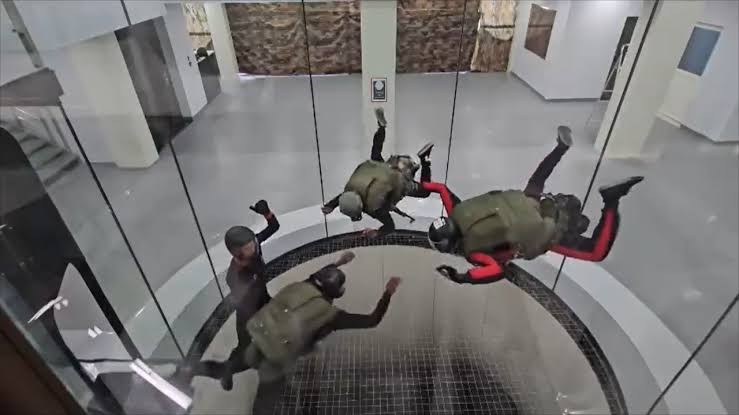Indian Army installs first vertical wind tunnel

The Vertical Wind tunnel was first envisaged for the Special Forces Training School in 1994. The first serious push was given by the Director General Military Training in 2004, wherein it was incorporated as a Long Term Plan. The then Scientific Advisor to Army Chief, Mr Balraj Gupta had even worked out the outline of the project.
Finally the Wind Tunnel has been inaugurated at the Special Forces Training school, Bakloh in Himachal Pradesh. The School moved there a few years back from Nahan where it had been established in 1993.
The state-of-the-art wind tunnel provides a controlled environment for soldiers to enhance their skills in simulating real-life Combat free-fall conditions. The VWT will refine the Combat Free Fall (CFF) skills of Special Forces personnel by simulating different CFF scenarios during training.
A state-of-the-art wind tunnel has been inaugurated at a training school in Himachal Pradesh. Army Chief Gen Manoj Pande virtually inaugurated “Indian Army’s first Vertical Wind Tunnel (VWT)”, the defence ministry said in a statement on Wednesday.
The wind tunnel at the Special Forces Training School (SFTS) at Bakloh is set to refine the Combat Free Fall (CFF) skills of SF.
“As part of the ongoing transformation of the Indian Army, technology is being infused into the training methodologies. Installation of a VWT is also a step in that direction,” the statement said.
The VWT acts as a freefall training simulator which creates a column of air at specific velocities, thus providing different CFF conditions. The system offers a controlled environment, enabling trainees to enhance their skills by simulating real-life freefall conditions.
The VWT’s integration into the CFF training curriculum at SFTS brings forth numerous pay-offs. The system is crucial in assessing individual reactions to numerous situations in an airborne operating environment.
It reduces potential instability in the air and during parachute deployment thereby assisting trainees to get used to free-fall conditions. The VWT is not only beneficial for beginners but also an exceptional asset for advanced training to combat free-fallers and even their CFF instructors. Installation of the first VWT has thus fulfilled the long standing dream of the pioneers who raised the HQ Special Forces and the Special Forces Training School under it, way back in 1993.
This project, is poised to greatly enhance the operational readiness of the future-ready Special Forces of the Indian Army, ensuring that they are fully prepared to tackle contemporary challenges of current and future battlefields. It promises faster and more precise training in this specialized field.




